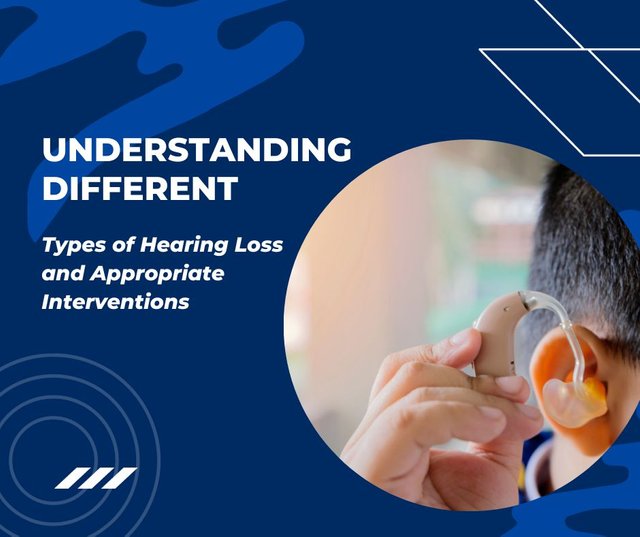Understanding Different Types of Hearing Loss and Appropriate Interventions

Hearing loss is a common condition that can significantly impact one's quality of life. It's important to recognize that there are different types of hearing loss, each requiring specific interventions. This article will delve into the various types of hearing loss and the appropriate interventions for each.
Conductive Hearing Loss
Conductive hearing loss occurs when there is a problem with the outer or middle ear that prevents sound from being conducted properly to the inner ear. This type of hearing loss can be caused by issues such as earwax buildup, middle ear infections, or abnormalities in the ear canal. Interventions may include earwax removal, medication for infections, or surgical procedures to correct structural abnormalities.
Sensorineural Hearing Loss
Sensorineural hearing loss is caused by damage to the inner ear or the auditory nerve. It is the most common type of permanent hearing loss and is often age-related or a result of exposure to loud noise. Interventions for sensorineural hearing loss typically involve the use of hearing aids or, in severe cases, cochlear implants.
Mixed Hearing Loss
Mixed hearing loss is a combination of conductive and sensorineural hearing loss, meaning there may be problems in both the outer/middle ear and the inner ear or auditory nerve. Interventions for mixed hearing loss may involve a combination of treatments, including medication, surgery, and hearing aids or cochlear implants.
Central Auditory Processing Disorder (CAPD)
CAPD is a condition where the brain has difficulty processing auditory information, even though the ears may be functioning normally. This can lead to difficulties in understanding speech, especially in noisy environments. Interventions may include auditory training exercises and strategies to improve listening skills.
Sudden Hearing Loss
Sudden hearing loss is an abrupt loss of hearing in one or both ears that occurs over a period of 72 hours or less. It is considered a medical emergency and requires immediate attention. Interventions may involve medication, such as corticosteroids, and diagnostic tests to determine the cause.
Noise-Induced Hearing Loss
This type of hearing loss is caused by exposure to loud noises over an extended period. It is preventable with the use of hearing protection. Interventions may include hearing aids or assistive listening devices to manage the resulting hearing loss.
Age-Related Hearing Loss (Presbycusis)
Age-related hearing loss is a natural part of the aging process and typically affects both ears equally. It is usually a sensorineural type of hearing loss. Interventions often involve the use of hearing aids to improve communication.
Conclusion
Understanding the different types of hearing loss is crucial for determining the most appropriate interventions. Whether it's a temporary conductive issue or a permanent sensorineural condition, seeking the guidance of an audiologist is the first step towards effective management. Early intervention and appropriate treatment can greatly enhance one's ability to communicate and lead a fulfilling life despite hearing challenges. Remember, seeking professional help is the key to addressing any type of hearing loss effectively.